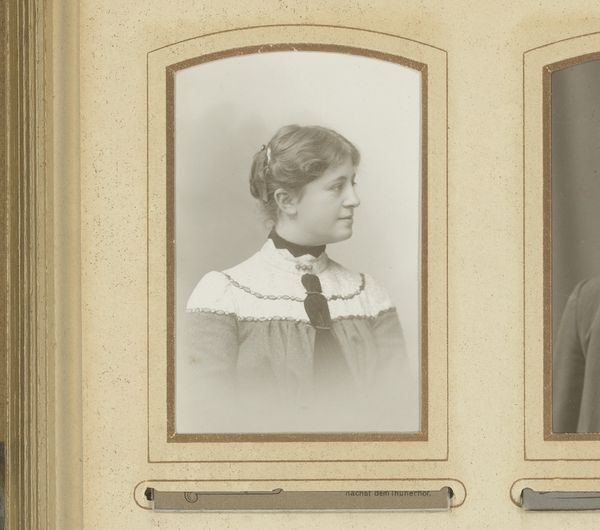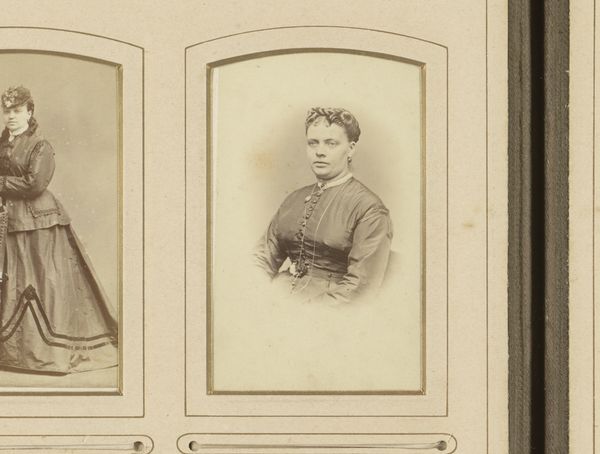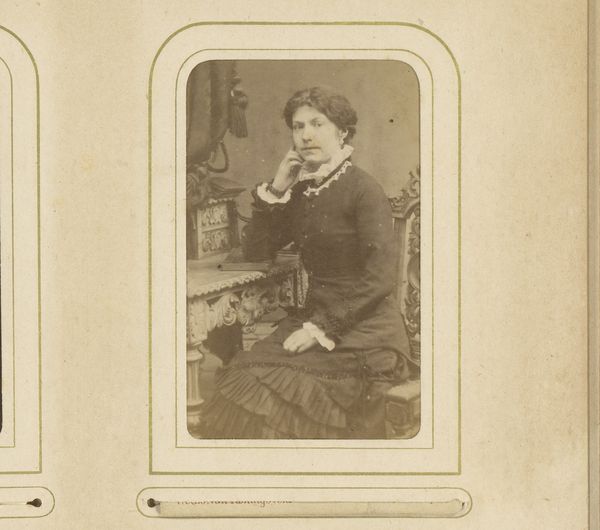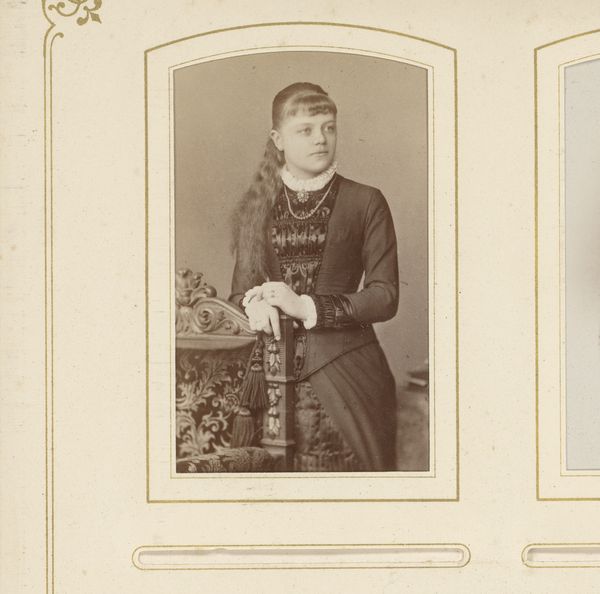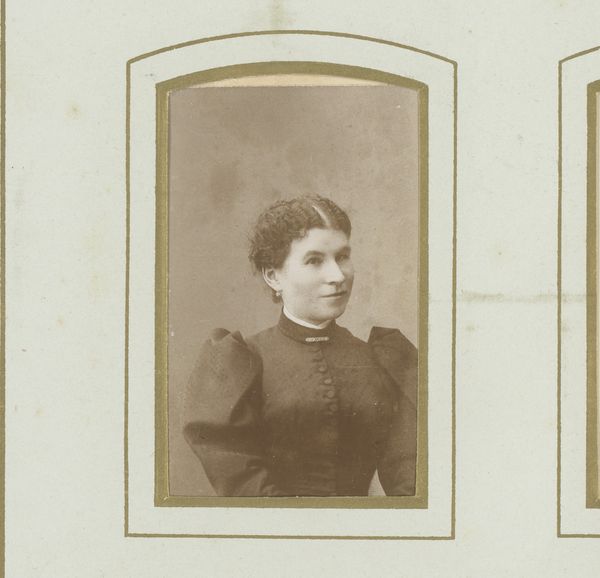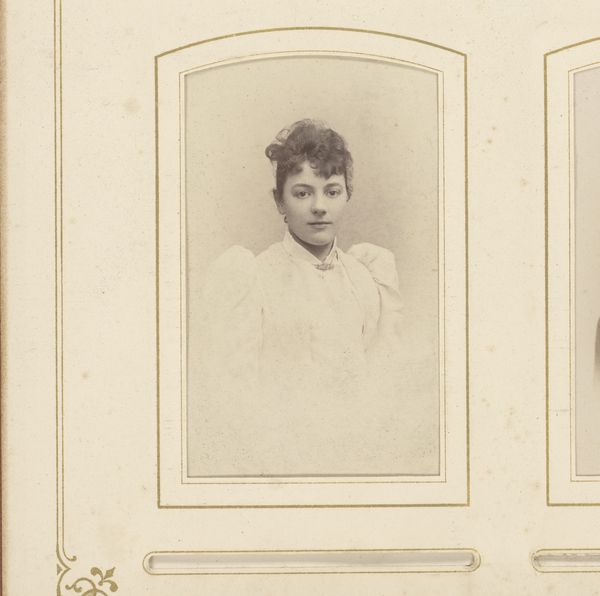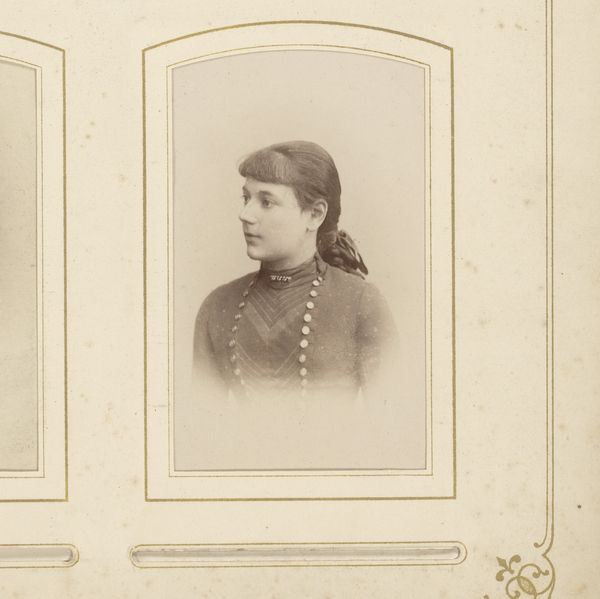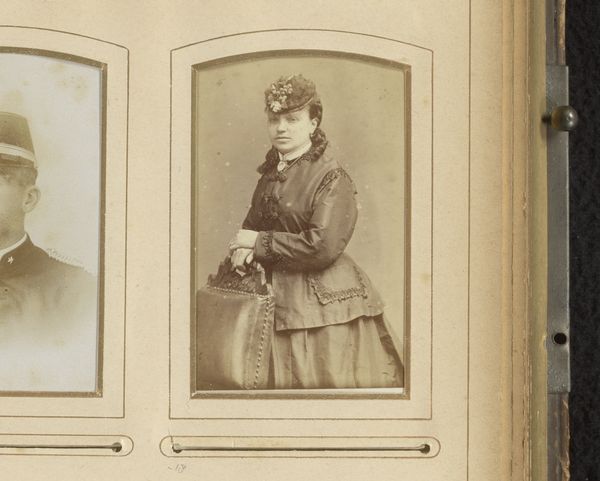
photography, gelatin-silver-print
#
pictorialism
#
photography
#
historical photography
#
gelatin-silver-print
#
19th century
#
academic-art
Dimensions: height 85 mm, width 53 mm
Copyright: Rijks Museum: Open Domain
Editor: Here we have Albert Greiner's "Portrait of a Young Woman Standing by a Balustrade," created sometime between 1883 and 1890, using the gelatin silver print process. It has a subdued quality that I find both elegant and a bit melancholic. What historical context informs your view of this piece? Curator: Well, seeing this through a historical lens, it's important to recognize the burgeoning role of photography in the late 19th century. Photography was becoming more accessible, impacting how portraiture functioned within society. It shifted from being exclusively for the elite to capturing a broader spectrum of social classes. Editor: So, how would the social context change photography as a medium? Curator: Think about it: traditional painted portraits were symbolic objects, reflecting the wealth and power of the sitter. The rise of photographic portraiture democratized representation. The very act of having one's photograph taken became a statement of social presence. Editor: It's interesting that even with the democratizing effect, there's still this staged formality in the pose and attire, wouldn’t you say? Curator: Absolutely. This is pictorialism creeping in, the desire to elevate photography to the status of fine art. This portrait engages in a visual dialogue with painting, adopting its compositional elements to garner respect and recognition within the art world. The inclusion of the balustrade and the subject’s studied pose definitely speaks to that artistic ambition. How does understanding photography's democratizing affect change the way you see it now? Editor: I hadn't really considered photography's function in establishing one's presence or how this relates to earlier traditions of portraiture. I guess this changes my idea that it’s a melancholic piece because it's actually saying "I'm here," maybe. Thanks, that's eye-opening. Curator: Precisely. Thinking about art's public role often leads to unexpected discoveries.
Comments
No comments
Be the first to comment and join the conversation on the ultimate creative platform.




